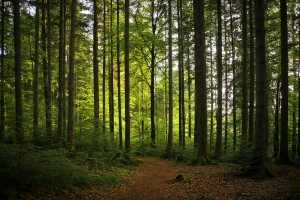Published: June 7, 2011
Validation will help forestry initiatives to sell their carbon credits.
Two projects in Kenya have become the first carbon forestry initiatives to be verified by the Climate, Community & Biodiversity (CCB) standard, which recognises projects that reduce greenhouse gas (GHG) emissions while benefiting local communities and biodiversity.
The International Small Group & Tree Planting Program (ISG) and Kasigau will now be able to sell their credits on the carbon markets.
Kasigau is a 420,000 acre programme that reduced more than 1mn tones of GHG emissions in its first year while providing alternative livelihoods to local people and conserving an area for endangered wildlife.
Meanwhile, ISG is a reforestation project working with more than 50,000 farmers covering almost 4,000 acres near Mount Kenya. It has reduced some 80,600 tons of carbon since 2004 while generating new sources of revenue for 8,000 people.
The CCB was created by the Climate, Community & Biodiversity Alliance (CCBA), a partnership of non-governmental organisations (NGOs), including Conservation International, CARE, Rainforest Alliance, the Nature Conservancy and the Wildlife Conservation Society.
Dr Joanna Durbin, a CCBA director, says these projects in Kenya are ready to market multiple-benefit carbon credits and that others are likely to follow. “There is a high percentage of projects that have been validated in Africa,” she tells EMEA Finance. “The biggest potential for forest carbon is in the tropical regions of the world.”
She adds that the standard is an alternative to the CDM mechanism, which has only a few projects in Africa and covers a limited range of forest carbon activities: “It is good to see this standard supporting and helping forest carbon projects in Africa that are not supported by other standards or processes.”
Setting the standard
The CCB standard was first mooted in 2003 following interest from the private sector and NGOs to invest in and support forest carbon projects that also deliver benefits to people and biodiversity. “There was interest in developing a standard to help identify which were the good projects,” Durbin says.
She adds that validation happens at an early stage and that the project then has to raise the funds. “Then you have to start generating emission reductions and change the way the land is used to generate revenues to local people and so it takes a few years,” she says. “The uncertainties in the forest carbon market have all added to the relatively slow pace.
“We are starting to see the first verifications going through, which shows that the projects are being implemented and are delivering those additional benefits.”
Each carbon project meeting the CCB standard is validated by a third-party auditor, which includes a 30-day public comment period and site visits to ensure it is likely to generate the expected climate, community and biodiversity benefits. The CCB standard is used in combination with a carbon model such as the Verified Carbon Standard.
Once verification is achieved, the project adds the CCB Label to its carbon credits that will be sold on the open market, making it easier for investors and offset buyers to identify a project that has achieved the CCB standard.
The Kasigau project is run by sustainability organisation Wildlife Works. Its president Mike Korchinsky said the organisation is committed to the CCB standard due to it providing an independent validation of its forestry projects.
To date, 37 carbon forestry projects have been validated against the CCB standard. In the next few years the CCBA expects several of them to complete the verification process to become fully-fledged CCB standard projects, allowing them to issue multiple-benefit carbon credits.
“Several people are talking to us about verification,” Dr Durbin says. “Over the next few years we expect to see dozens of similar projects achieve verification.”


